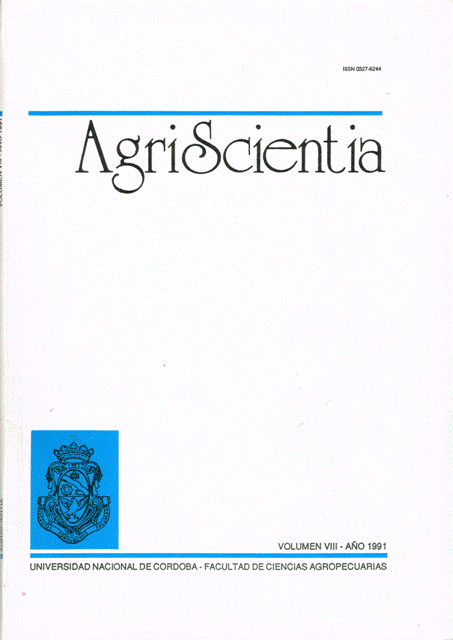Leaf epidermal characters of diagnostic value in the identification of woody plants of the western Chaco
Main Article Content
Abstract
n illustrated description of the leaf epidermis of 36 woody species present in the Western Chaco of Argentina (Salta Province) is presented. It includes a key for the identification of leaf fragments found in the faeces and in the stomach and ruminal contents of herbivores. The main characters used for the identification of plant fragments were cell walls, trichomes, stomata, and cuticular ornamentation.
Article Details

This work is licensed under a Creative Commons Attribution-ShareAlike 4.0 International License.
How to Cite
References
Baumgartner, L. L., & Martin, A. C. (1939). Plant histology as an aid in squirrel food habit studies. Journal of Wildlife Management, 3(3), 266-268.
Cabrera, A. L. (1976). Regiones fitogeográficas argentinas. En Enciclopedia Argentina de Agricultura y Jardinería (Fascículo 1, Tomo 2). Ed. Acme, Buenos Aires.
Dizzeo de Strittmatter, C. G. (1973). Nueva técnica de diafanización. Boletín de la Sociedad Argentina de Botánica, 15(1), 126-129.
Dusi, J. L. (1949). Methods for the determination of food habits by plant microtechniques and histology and their application to cottontail rabbit food habits. Journal of Wildlife Management, 13(3), 295-298.
Hansen, R. M. (1971). Drawing of tissues of plants found in herbivore diet and in the litter of grasslands. Technical Report N 270, Colorado State University, 69 p.
Hansen, R. M., Foppe, T. M., Gilbert, M. B., Clark, R. C., & Reynolds, H. W. (1978). The microhistological analysis of faeces as an estimator of herbivory dietary. Technical Report, Colorado State University, 6 p.
Johnson, M. K., Wofford, H., & Pearson, H. A. (1983). Microhistological techniques for food habits analysis. Research Paper SO-199, United States Department of Agriculture, Forest Service, 40 p.
Metcalfe, C. R. (1960). Anatomy of the monocotyledons, I. Gramineae. Oxford University Press, London, 731 p.
Metcalfe, C. R., & Chalk, L. (1950). Anatomy of the dicotyledons (2 Vols.). Clarendon Press, Oxford, England, 150 p.
Metcalfe, C. R., & Chalk, L. (1979). Anatomy of the dicotyledons (Vol. 1, 4th ed.). Oxford University Press, London, 724 p.
Morello, J., & Adamoli, J. (1974). Las grandes unidades de vegetación y ambiente del Chaco argentino. Segunda parte: Vegetación y ambiente de la provincia del Chaco. Instituto Nacional de Tecnología Agropecuaria (Argentina), Serie Fitogeográfica, 13.
Morello, J., & Saravia Toledo, C. (1959). El bosque chaqueño I: Paisaje primitivo, paisaje natural y paisaje cultural en el oriente de Salta. Revista Agronómica del Noroeste Argentino, 3, 5-8.
Stewart, D. R. M. (1967). Analysis of plant epidermis in faeces: A technique for studying the food preferences of grazing herbivores. Journal of Applied Ecology, 4, 83-111.





